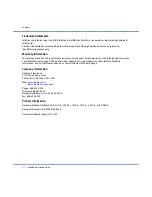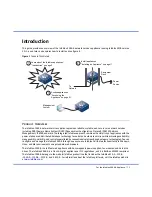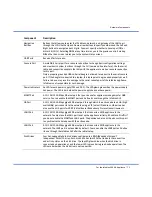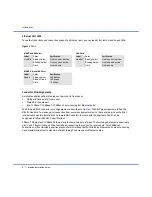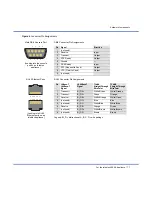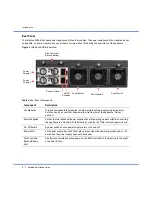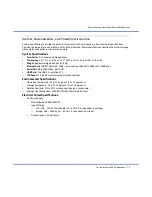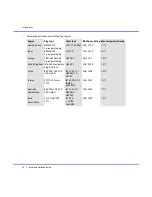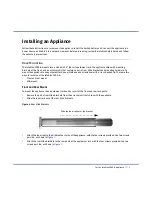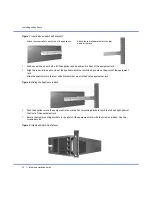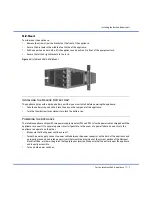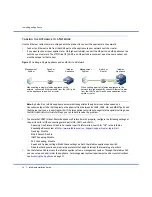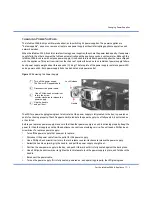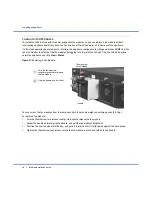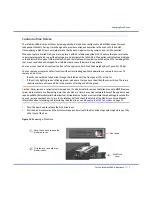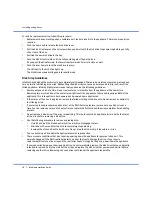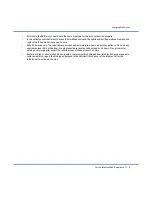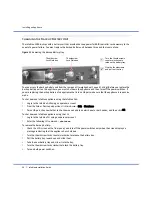
Hardware Components
For the Infoblox-2000-A Appliance
5
Navigation
Buttons
Buttons that allow you to enter the IP address, netmask, and gateway of the LAN1 port
through the LCD. Use the Up and Down arrow buttons to specify numbers and the Left and
Right buttons to navigate across digits. You must specify whether to save input (OK) or
discard it (CNCL). Selecting
CNCL
at any time returns you to the previous entry. Entering
OK
on the third screen returns you to the system status screen.
USB Ports
Reserved for future use.
Console Port
A male DB-9 serial port for a console connection to change basic configuration settings
and view basic system functions through the CLI (command line interface). Use the serial
cable and connection adapters that ship with the appliance to make a console connection
to this port.
Only a properly grounded USB-to-Serial dongle is allowed to connect to the serial console
port. If the dongle is connected to a laptop, this laptop must be grounded properly as well.
Failure to do so may result in damage to the serial console port of the Infoblox appliance.
Infoblox is not responsible for such damage.
Power Indicators
An LED for each power supply (PS1 and PS2). The LED glows green when the power supply
has power. The LED is dark when the power supply does not have power.
MGMT Port
A 10/100/1000-Mbps Ethernet port that you can use for appliance management or DNS
service. You can enable the MGMT port and define its use through the Infoblox GUI.
HA Port
A 10/100/1000-Mbps gigabit Ethernet port through which the active node in an HA (high
availability) pair connects to the network using a VIP (virtual IP) address. HA pair nodes
also use their HA ports for VRRP (Virtual Router Redundancy Protocol) advertisements.
LAN1 Port
A 10/100/1000-Mbps gigabit Ethernet port that connects a NIOS appliance to the
network. You must use the LAN1 port to set up the appliance initially. It handles all traffic if
you do not enable the MGMT and LAN2 ports. The passive node in an HA pair uses this port
to synchronize the database with the active node.
LAN2 Port
A 10/100/1000-Mbps gigabit Ethernet port that connects a NIOS appliance to the
network. The LAN2 port is not enabled by default. You can enable the LAN2 port and define
its use through the Infoblox GUI after the initial setup.
Disk Drives
Four hot-swappable hard disk drives configured in a RAID (Redundant Array of
Independent Disks) 10 array. Each disk drive has two LEDs that indicate the connection
and activity status on the disk drive. The top LED glows blue when the disk drive is
connected and operational, and the lower LED is green during read-write operations. The
LEDs are dark when the disk drive is not connected.
Component
Description


